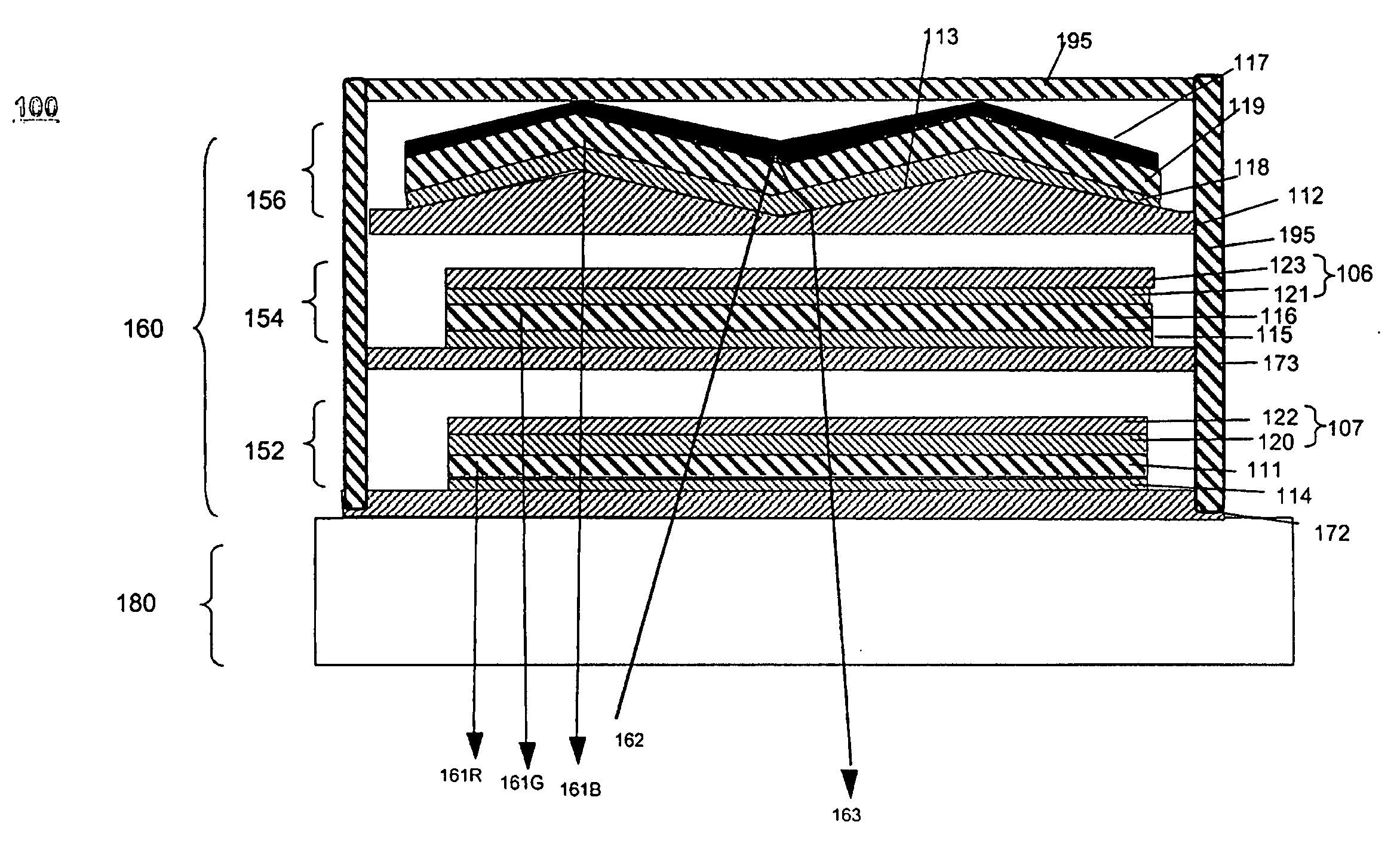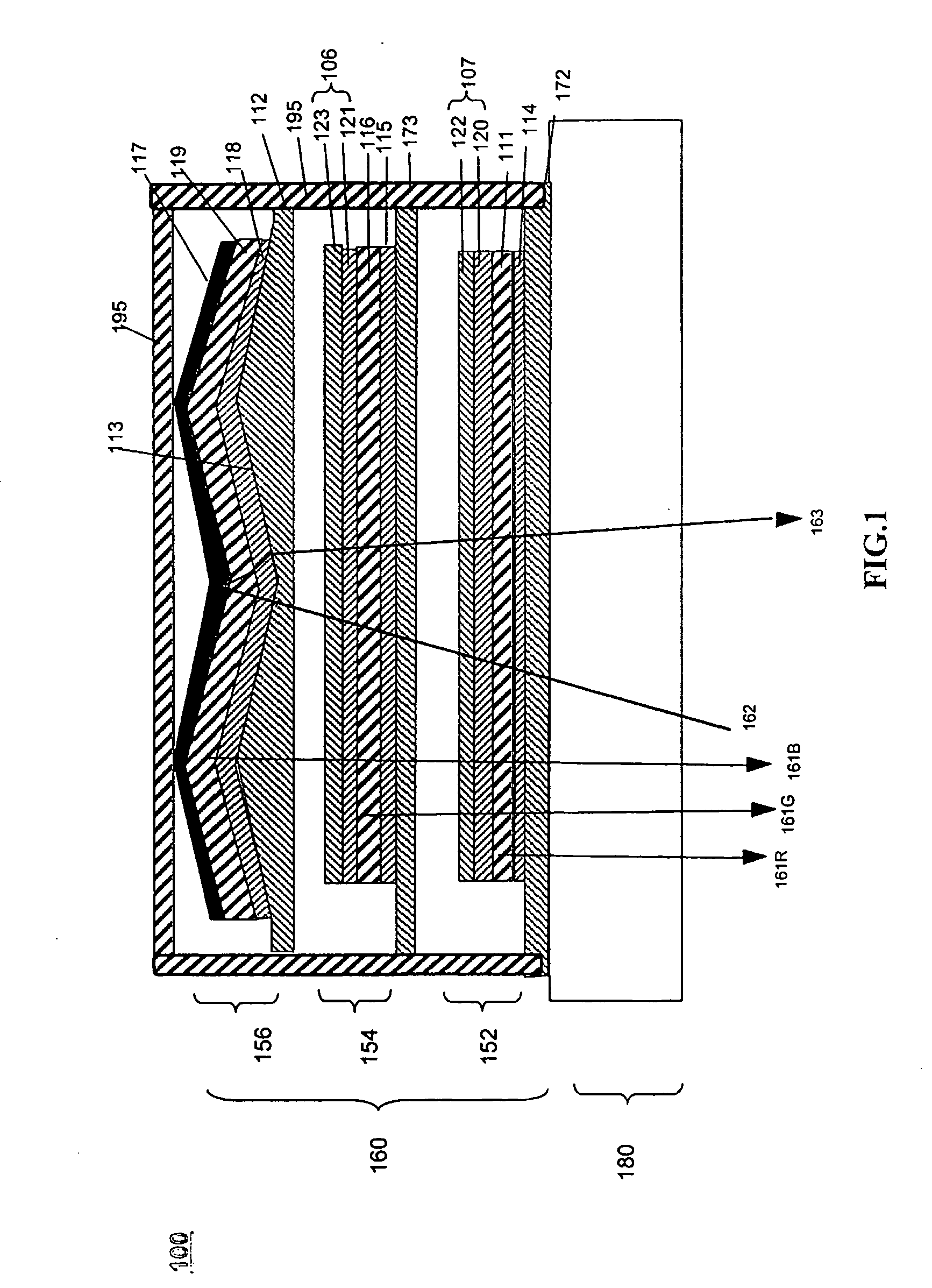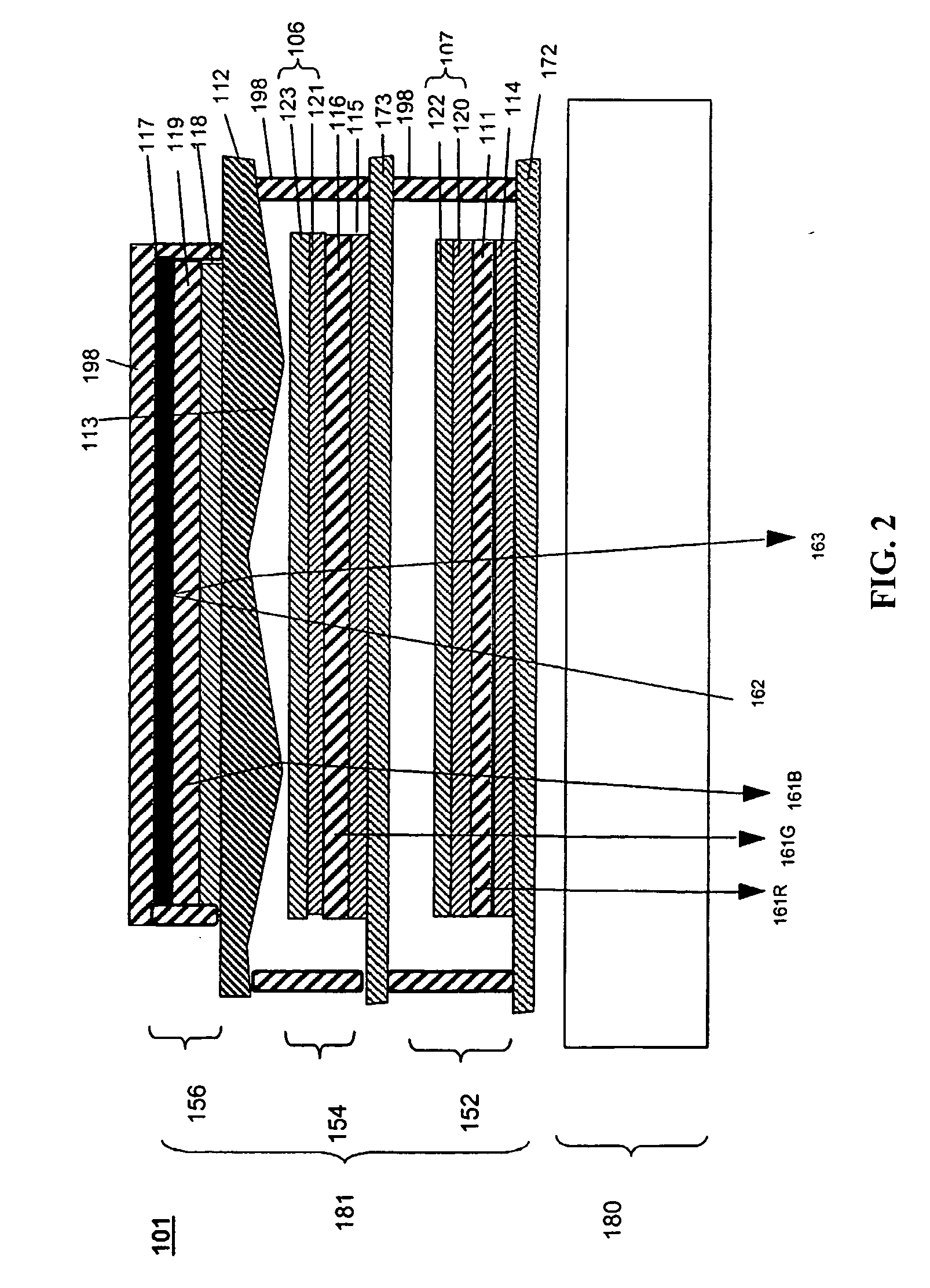Transflective display having full color oled blacklight
a technology of oled blacklight and reflector, which is applied in the field of illumination devices, can solve the problems of reducing efficiency, affecting the effect of illumination, and affecting the efficiency of small lamps, so as to enhance the reflection ratio of the reflective electrode, enhance the outcoupling effect, and increase the aperture ratio
- Summary
- Abstract
- Description
- Claims
- Application Information
AI Technical Summary
Benefits of technology
Problems solved by technology
Method used
Image
Examples
Embodiment Construction
[0013] OLEDs make use of thin organic films that emit light when voltage is applied across the device. OLEDs are becoming an increasingly interesting technology for use in applications such as flat device displays, illumination, and backlighting. Several OLED materials and configurations are described in U.S. Pat. Nos. 5,844,363, 6,303,238, and 5,707,745, which are incorporated herein by reference in their entireties.
[0014] As used herein a “conventional OLED” device is one that is intended to emit light through only one of the electrodes. Thus only one of the electrodes is transparent while the other is reflective and, preferably, opaque. For a device intended to emit light only through the bottom electrode, the top electrode (i.e., the cathode) is reflective rather than transmissive and may be comprised of an opaque metal layer having a high electrical conductivity. A transparent conductive material, such as indium tin oxide (ITO), may be used as the bottom electrode. Similarly, ...
PUM
 Login to View More
Login to View More Abstract
Description
Claims
Application Information
 Login to View More
Login to View More - R&D
- Intellectual Property
- Life Sciences
- Materials
- Tech Scout
- Unparalleled Data Quality
- Higher Quality Content
- 60% Fewer Hallucinations
Browse by: Latest US Patents, China's latest patents, Technical Efficacy Thesaurus, Application Domain, Technology Topic, Popular Technical Reports.
© 2025 PatSnap. All rights reserved.Legal|Privacy policy|Modern Slavery Act Transparency Statement|Sitemap|About US| Contact US: help@patsnap.com



